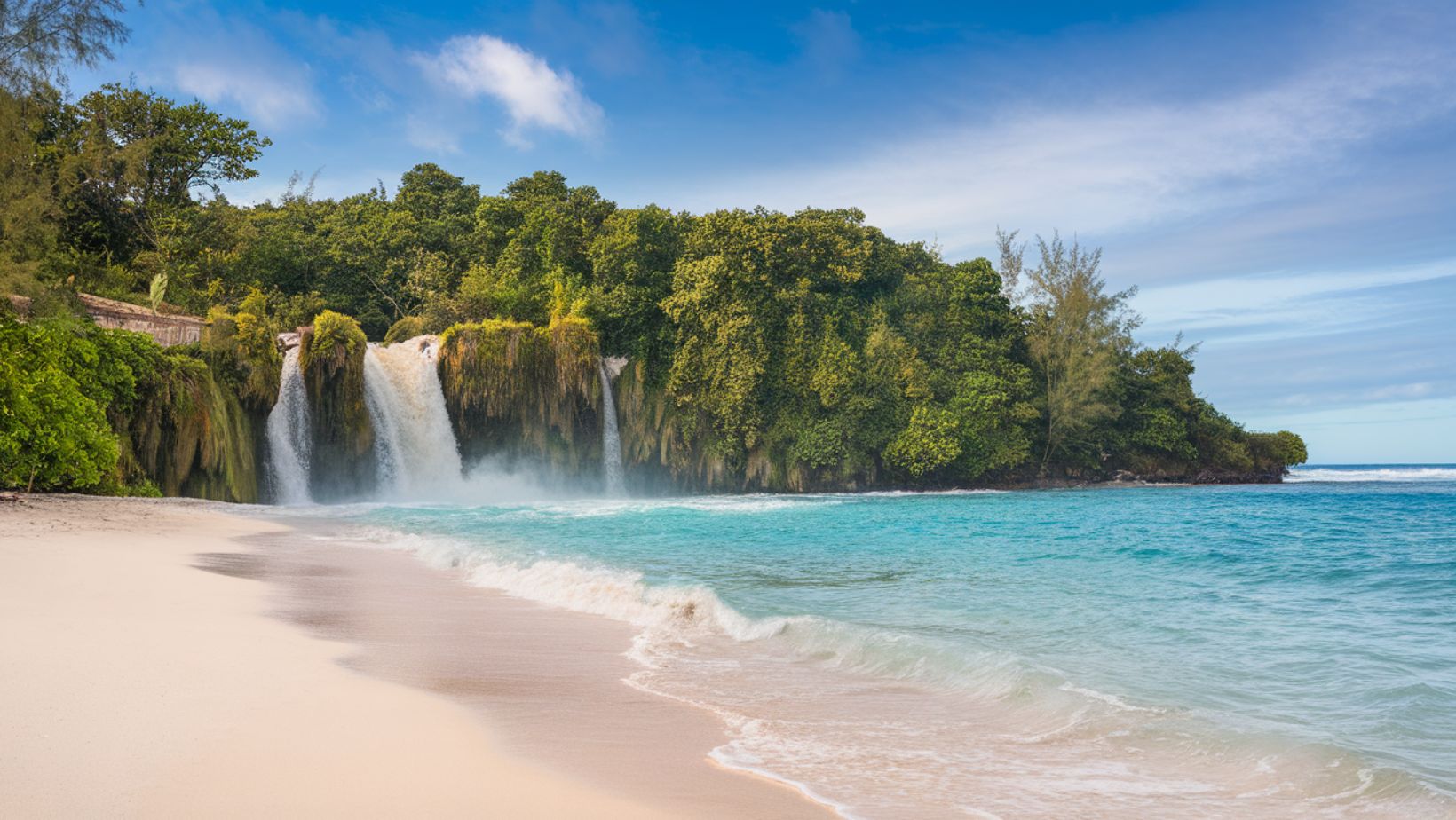What rare natural phenomenon creates a waterfall that appears to dance with ocean tides? How did nature design such a perfect marriage of fresh and salt water in one of California’s most pristine coves? Why does this 80-foot cascade falling directly onto a pristine beach remain eternally untouched by human footprints? At McWay Falls, where impossible beauty meets careful preservation, one of Earth’s most unique waterfall displays continues to enchant visitors from a carefully maintained distance.
McWay Falls Stands as Earths Most Perfect Tidal Waterfall
Cascading 80 feet directly onto a pristine beach cove, McWay Falls represents a rare natural phenomenon known as a “tidal waterfall.” Like other magical natural pools, its interaction with tidal waters creates an ever-changing display. The falls’ year-round flow merges with Pacific Ocean tides, creating a dynamic interaction that transforms throughout the day as tides rise and fall, making it one of only two such waterfalls on the California coast.
Geological History Created Perfect Conditions
The formation of McWay Falls resulted from a unique combination of geological processes. Similar to how other natural formations capture imagination, the granite cliffs and protected cove created the perfect setting for this coastal wonder. Tectonic activity along the Big Sur coastline, combined with millennia of erosion, carved out the amphitheater-like cove that frames the falls.
Conservation Efforts Maintain Pristine Beauty
The falls’ untouched beauty is preserved through strict access restrictions. Like other protected natural wonders, McWay Falls benefits from careful management that balances public viewing with environmental protection. The beach below the falls remains permanently closed to public access, ensuring the scene remains as pristine as it was centuries ago.
Viewing Platform Creates Perfect Photographic Opportunities
While visitors cannot access the beach directly, a carefully designed viewing platform provides spectacular vantage points. This overlook, part of Julia Pfeiffer Burns State Park, offers unobstructed views of the falls, cove, and surrounding coastline. The platform’s position allows photographers to capture the falls in their full glory while protecting the fragile ecosystem below.
Seasonal Changes Transform the Experience
Each season brings unique characteristics to McWay Falls. Winter storms create dramatic displays as waves crash against the cove’s walls, while summer fog adds mystical elements to early morning views. Spring brings wildflower blooms to the surrounding cliffs, and fall offers the clearest skies for photography. The constant interplay between fresh water, salt water, and changing weather creates an ever-evolving natural spectacle.
Marine Life Thrives in Protected Waters
The protected cove around McWay Falls serves as a nursery for various marine species. Sea otters frequently rest in the sheltered waters, while seabirds nest in the surrounding cliffs. The mixing of fresh and salt water creates unique conditions that support diverse marine life, making the cove an important ecological sanctuary along the Big Sur coast.
Historical Significance Shapes Modern Protection
The falls and surrounding land were once part of the estate of Lathrop and Helen Hooper Brown, who built a house overlooking the cove in the 1920s. Their decision to donate the property to the state park system ensures its perpetual protection. The remaining foundation of their home now serves as the primary viewing platform, offering a perfect vantage point for visitors.
Scientific Studies Document Unique Ecosystem
Researchers continue to study the unique ecosystem around McWay Falls. The interaction between fresh and salt water creates distinctive chemical and biological conditions that support specialized plant and animal communities. Studies of water flow patterns and tidal influences help scientists understand coastal erosion and ecosystem dynamics.
Photography Challenges Inspire Innovation
Photographing McWay Falls presents unique challenges and opportunities. The restricted viewing angle forces photographers to be creative with composition, while changing light conditions throughout the day offer diverse possibilities for capturing the scene. The combination of waterfall, beach, and ocean creates complex exposure situations that test photographers’ technical skills.
Future Preservation Faces Environmental Challenges
Climate change and coastal erosion pose significant challenges for preserving McWay Falls. Rising sea levels could alter the falls’ interaction with the ocean, while increased storm intensity threatens the stability of surrounding cliffs. Park managers monitor these changes while developing long-term conservation strategies to protect this unique natural wonder.

